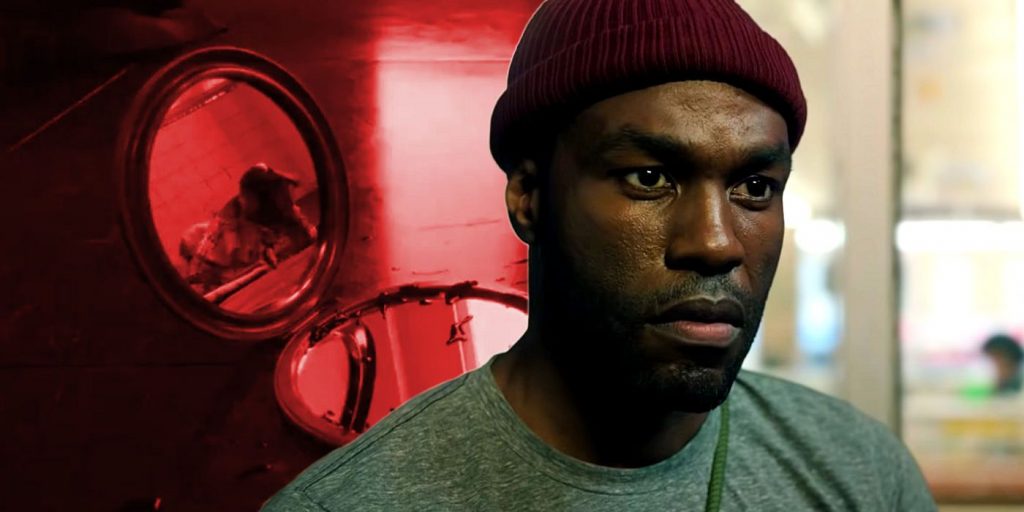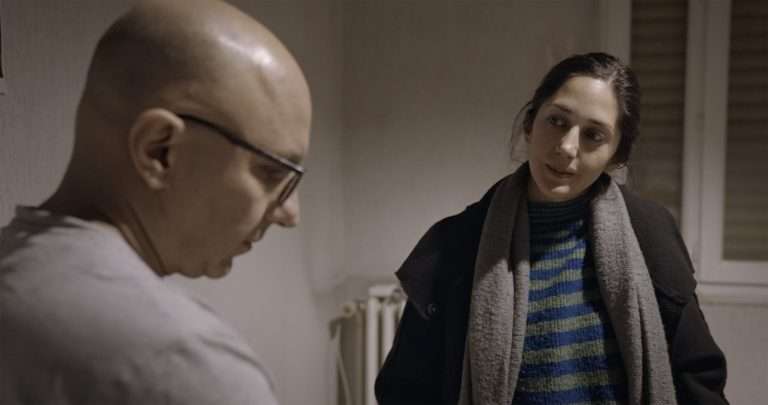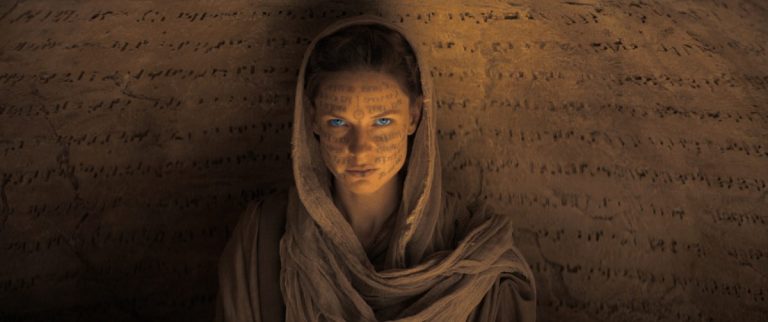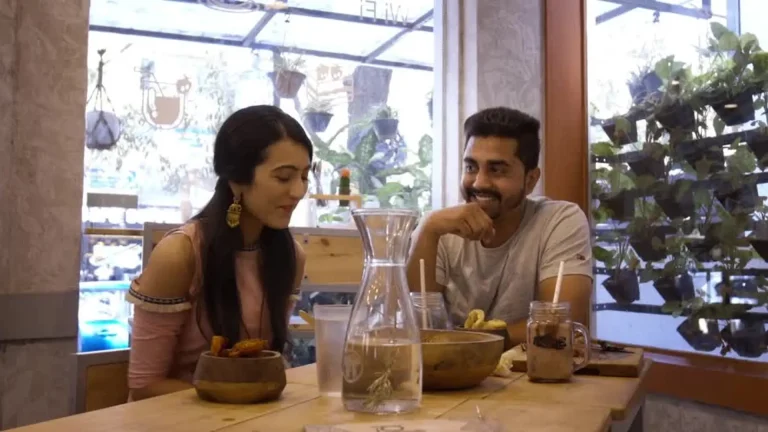Since its creation, “Candyman” – the feared Clive Barker’s character popularized by the iconic Tony Todd – has always represented the gap between image and human essence, showing how deviations from the latter are commonly projected onto figures far from the former. In this sense, nothing is more effective than a conjured entity in front of a mirror, where we see the creators of these “monsters” that populate our imagination.
Not all of these creations, however, are controlled by powerful narrators, many deeply hampered by the difficulty of access to the place of speech. In this way, Nia DaCosta wisely enhances the racial dilemmas already present in the predecessor feature, building a horrifying tale of the impact that different views can have on the consolidation of History.
Stagnating in his career as an artist, painter Anthony McCoy (Yahya Abdul-Mateen II) seeks new inspiration for his paintings, renowned for his socially charged creations. Inhabiting the gentrified “Cabrini-Green” neighborhood with his girlfriend and curator Brianna Cartwright (Teyonah Parris) – completely abandoned as a housing development to be later exploited by the same white businessmen who created it – he decides to explore the origins of his area, venturing to unravel the mysteries behind the mystical “Candyman”. When he decides to use it in his works, however, an ancient curse is restored, indicating a strange series of murders.
Related to Candyman (2021) – I Am Mother Netflix [2019] Review – A Slick but Underwhelming AI-Themed Thriller
Through different narrations – which recount passages from the original in great animations made with shadows – DaCosta establishes from the beginning his intention to redefine the optics that dictate his plot, written with six hands together with Jordan Peele and Win Rosenfeld. If in 1992 we followed student Helen Lyle (Virginia Madsen), we now follow a real victim of the discriminative evil that rules the region, changing the way one relates to the symbolism surrounding the legendary killer. That is, of course, when it is his vision that dominates the scene, and it is not uncommon on the screen to have the clashes between different world views that the film talks so much about.
In this sense, the passages that the director composes, together with photographer John Guleserian, using the advancement of the camera, going through and entering the different corners of the environments, are magnetic. An example of this occurs in one of the gallery sequences, in which the movement through the space emulates the posture of its frequenters, searching for reflections and meanings in each wall they pass through. Equally interesting are the transitions that register, in aerial camera to pay homage once again to the film that originated the franchise, the top of the sky-scrapers raised by human force, registering them upside down. It is as if the direction is questioning these structures built to hide years of neglect, challenging the rigid structures we keep building to try to control nature, from which we have only moved away.
Going further, this care with the symbolic gaze also presents itself in the construction of the violent attacks, which mix the use of the mirror as a scenic object and the use of the extra field – what we can’t see on the screen. Such resources constitute not only intense visual sequences – which, as few have done in recent years, exhales an incomparable tension – but also reinforce the idea that the specters that torment us are the fruit of our nature, leading us to externalize the traits we resist accepting in ourselves. And while some find in artistic expression a way to reconcile with themselves, for others certain interventions are not enough, reduced to mere sketches of discomfort and suffering – the latter, in the case of this production, quite literally.
Also read – Dark Figure of Crime [2019] ‘NYAFF’ Review – A Visceral Crime Drama
This logic of subjectivity in front of art dialogues very well with Anthony’s trajectory, a figure who tries to find himself through his brushes, trying to distance himself from the distorted faces that start to compose his collection on white canvases. If for him, making art acts as a strategy for the release of generational traumas – allowing him to explore roots about which he knows very little -, the others cannot see him with the same sensibility, distorting his intentions at every word, leading to a lack of interpretation. This mechanism of misrepresentation through reproduction – like the ritual evocation of Candyman himself, widespread throughout the film – is beautifully translated in the use of depth of field, which in many frames employs the repetition of scenic objects to deepen spaces and remove characters from their deserved foreground.
The inability to face certain traumas becomes a theme of even greater importance when considering the arc of Brianna, a figure haunted by a demon from the past that she tries, without apparent success, to exorcise through art. Although not being directly affected by the killings, she is then tormented by the bodies that start to spread, reminders of what the artistic manifest can become when disconnected from true motivations – an empty and grotesque carcass. This feature, moreover, works as a great honor to the roots of the slasher, which has always used the physical deformation typical of body horror as a metaphor for the loss of one’s nature.
Finally, it is also fair to mention how the racial themes escalate to a very charged ending, which represents very well the transition from the shadow theater, proposed from the beginning, to a more visual and explicit representation, showing that unfortunately certain phobias and inexplicable social dysfunctions do not exist only in subtext.
As well as the important presence of Colman Domingo’s character – who despite being very interesting seems more restrained than it should be – some resolutions, unfortunately, contrast with the ambiguity proposed throughout most of the experience – although the subgenre explored here allows for more literal entries – and could benefit from a slight increase in the project’s length.
Reconfiguring the Candyman mystery for the universe of artists and, especially, those who are subjected to live in the shadows, the feature is an excellent modernization of one of the “monsters” of recent Seventh Art that has always been involved with extremely important themes. Skilled at constructing chilling sequences, Nia DaCosta demonstrates a great command of this more physical aspect of terror, mixing the image and the suggestive to recover the mythology of a figure much more fed by belief than by any other force.
Guided by the use of this subjective look, the director contrasts, in this way, those whose negative traits will always be masked by shadows, privileged by social disparities, with those who are unfairly reduced to mere caricatures of evil, visually exploited by the media and other forces of power. Unlike the protagonists, she tragically follows, however, it is a relief that she manages to come to light.



![’83 [2021] Review: Not Spell-Binding Enough and Sacrifices Storytelling at the Altar of Entertainment](https://79468c92.delivery.rocketcdn.me/wp-content/uploads/2021/12/83-Movie-Review-768x384.jpg)




